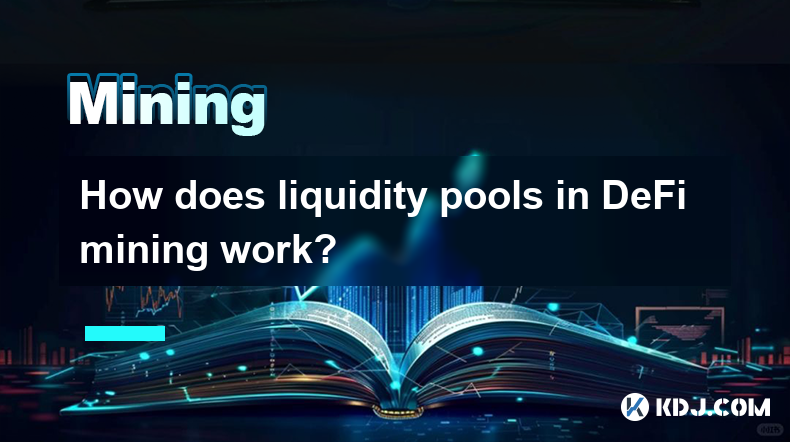-
 Bitcoin
Bitcoin $85,262.3331
0.92% -
 Ethereum
Ethereum $1,597.0506
0.61% -
 Tether USDt
Tether USDt $1.0000
0.01% -
 XRP
XRP $2.0870
0.58% -
 BNB
BNB $590.9891
0.28% -
 Solana
Solana $139.4499
3.66% -
 USDC
USDC $0.9999
0.01% -
 Dogecoin
Dogecoin $0.1582
1.86% -
 TRON
TRON $0.2418
-1.68% -
 Cardano
Cardano $0.6280
2.21% -
 UNUS SED LEO
UNUS SED LEO $9.3593
2.37% -
 Chainlink
Chainlink $12.8312
1.29% -
 Avalanche
Avalanche $19.5769
2.31% -
 Stellar
Stellar $0.2461
1.05% -
 Toncoin
Toncoin $2.9796
-0.37% -
 Shiba Inu
Shiba Inu $0.0...01217
1.72% -
 Hedera
Hedera $0.1660
-0.16% -
 Sui
Sui $2.1379
0.78% -
 Bitcoin Cash
Bitcoin Cash $339.1776
2.72% -
 Hyperliquid
Hyperliquid $18.1573
7.72% -
 Polkadot
Polkadot $3.7260
0.38% -
 Litecoin
Litecoin $76.0878
0.30% -
 Dai
Dai $1.0000
0.01% -
 Bitget Token
Bitget Token $4.4591
2.16% -
 Ethena USDe
Ethena USDe $0.9993
0.02% -
 Pi
Pi $0.6440
5.30% -
 Monero
Monero $214.5782
-1.68% -
 Uniswap
Uniswap $5.2550
0.96% -
 OKB
OKB $50.6289
0.67% -
 Pepe
Pepe $0.0...07209
0.84%
How does liquidity pools in DeFi mining work?
DeFi liquidity pools, crucial for DEX operation, reward users with trading fees for providing paired tokens. However, impermanent loss—where holding assets individually yields higher returns—is a key risk, mitigated by strategies like selecting low-volatility pairs and understanding market trends.
Mar 23, 2025 at 02:08 pm

Key Points:
- Liquidity pools are the foundation of many DeFi protocols, providing the necessary funds for decentralized exchanges (DEXs) to operate.
- Providing liquidity to a pool involves depositing pairs of tokens, earning trading fees as a reward.
- Impermanent loss is a significant risk, where holding tokens individually would have yielded higher returns than providing liquidity.
- Various strategies exist to mitigate impermanent loss, including selecting low-volatility token pairs and understanding market trends.
- Yield farming involves leveraging deposited liquidity in various DeFi protocols for enhanced returns, often involving multiple pools.
How Does Liquidity Pools in DeFi Mining Work?
Decentralized Finance (DeFi) has revolutionized traditional finance by leveraging blockchain technology to create trustless and transparent financial systems. A core component of this revolution is the liquidity pool, a crucial element in DeFi mining and yield farming strategies. These pools are essentially collections of cryptocurrencies locked in a smart contract, providing the necessary funds for decentralized exchanges (DEXs) to operate. Without liquidity pools, DEXs would struggle to facilitate trades.
The mechanism is straightforward. Users deposit pairs of tokens – for instance, ETH and USDC – into a smart contract. This creates liquidity for traders on the DEX to swap between these tokens. In return for providing this liquidity, users earn a share of the trading fees generated by these swaps. The share received is proportional to the amount of liquidity provided. The more tokens deposited, the larger the share of trading fees earned.
However, there's a significant risk associated with providing liquidity: impermanent loss. This occurs when the relative price of the deposited tokens changes after they are added to the pool. If one token's price appreciates significantly compared to the other, you would have earned more by simply holding the assets individually.
For example, imagine you deposit 1 ETH and 1000 USDC when ETH is priced at $1000. If ETH's price doubles to $2000, while USDC remains stable, you'd have made more profit by simply holding your ETH and USDC separately. Impermanent loss represents the difference between your profits from providing liquidity versus holding your assets. This loss is only "impermanent" until you withdraw your assets from the pool. If the prices revert to their original ratio before withdrawal, the loss disappears.
Several strategies can help mitigate impermanent loss. One approach is to choose low-volatility token pairs. Stablecoins paired with a relatively stable asset, such as a blue-chip cryptocurrency, minimizes price fluctuations and therefore the risk of impermanent loss. Another strategy is to carefully analyze market trends and understand the potential price movements of the tokens you're considering.
Yield farming takes liquidity provision a step further. It involves strategically moving your liquidity between various DeFi protocols to maximize returns. This often involves using borrowed funds or leveraging your existing liquidity across multiple pools, potentially compounding your earnings. However, this comes with increased risk, as leveraged positions amplify both profits and losses.
Understanding the concept of impermanent loss is crucial before participating in liquidity pools. Many platforms offer calculators to estimate potential impermanent loss based on different price scenarios. It's important to thoroughly research and understand the risks before committing funds to a liquidity pool. Remember, while the potential for high returns exists, it’s crucial to carefully weigh the associated risks.
Yield Farming Strategies:
Yield farming involves utilizing liquidity provision to generate higher returns. This often entails moving funds between different liquidity pools to capitalize on higher yields.
- Staking: Staking involves locking your tokens to support the network's security and earn rewards. Many DeFi protocols offer staking rewards alongside liquidity provision.
- Compounding: Regularly reinvesting earned rewards to increase your principal amount and accelerate earnings.
- Diversification: Spreading your liquidity across multiple pools and protocols to mitigate risk.
- Risk Management: Closely monitoring market conditions and adjusting your strategy accordingly.
Common Questions:
Q: What are the risks associated with liquidity pool participation?
A: The primary risk is impermanent loss, where holding assets individually would have been more profitable. Additionally, smart contract vulnerabilities, rug pulls (where developers abscond with funds), and market volatility all pose significant risks.
Q: How do I choose a suitable liquidity pool?
A: Consider the token pair's volatility, the trading fees offered, the reputation of the DeFi protocol, and the overall security of the smart contract. Research and due diligence are crucial.
Q: What is the difference between liquidity mining and yield farming?
A: Liquidity mining typically focuses on providing liquidity to a single pool for earning trading fees. Yield farming is a broader term encompassing multiple strategies, including liquidity mining, to maximize returns across various DeFi protocols.
Q: How can I minimize impermanent loss?
A: Choose low-volatility token pairs, carefully analyze market trends, and consider the time horizon of your investment. Understanding your risk tolerance is also crucial.
Q: Are there any fees associated with liquidity pools?
A: Yes, there are typically gas fees for transactions on the blockchain, and some protocols may charge additional fees for using their services. Trading fees are earned by liquidity providers, not paid by them.
Disclaimer:info@kdj.com
The information provided is not trading advice. kdj.com does not assume any responsibility for any investments made based on the information provided in this article. Cryptocurrencies are highly volatile and it is highly recommended that you invest with caution after thorough research!
If you believe that the content used on this website infringes your copyright, please contact us immediately (info@kdj.com) and we will delete it promptly.
- Rare 50p coin is being sold online for more than £60,00.
- 2025-04-19 18:30:13
- From $5.2M Paper Profits to a $355,000 Loss: The Rise and Crash of LUCE Meme Coin
- 2025-04-19 18:30:13
- Whale Activity Sends Bitcoin Price Surging
- 2025-04-19 18:25:13
- Canary Capital Has Filed an S-1 Registration with the US Securities and Exchange Commission (SEC) to Launch a Spot Exchange-Traded Fund (ETF) Focused on Tron (TRX)
- 2025-04-19 18:25:13
- XYO Launches Its New Layer-1 Blockchain with a Novel Proof of Perfect Protocol and Native XL1 Token
- 2025-04-19 18:20:13
- Upper Delaware Scenic and Recreational River Invites Nominations for Water Safety Challenge Coin Award Program
- 2025-04-19 18:20:13
Related knowledge

How to judge the stability and reliability of the mining pool?
Apr 19,2025 at 02:08pm
When engaging in cryptocurrency mining, choosing the right mining pool is crucial for maximizing your returns and ensuring a stable mining experience. The stability and reliability of a mining pool can significantly impact your overall success in mining. Here, we will explore the key factors to consider when evaluating the stability and reliability of a...

How to deal with abnormal noise during mining machine operation?
Apr 17,2025 at 01:35am
Mining machines are essential tools for cryptocurrency miners, but they can sometimes produce abnormal noises that may indicate underlying issues. Understanding how to identify and address these noises is crucial for maintaining the efficiency and longevity of your mining equipment. This article will guide you through the process of dealing with abnorma...

How to maintain anonymity when mining?
Apr 17,2025 at 06:01pm
Maintaining anonymity when mining cryptocurrencies is crucial for many miners who wish to protect their privacy and security. This article will guide you through various strategies and tools that can help you achieve a high level of anonymity while engaging in mining activities. Understanding the Importance of Anonymity in MiningAnonymity in the context...

How to automate mining tasks through scripts?
Apr 18,2025 at 01:29pm
In the world of cryptocurrency, mining remains a crucial activity for generating new coins and securing blockchain networks. Automating mining tasks through scripts can significantly enhance efficiency and reduce manual labor. This article delves into the intricacies of automating mining tasks, providing a comprehensive guide on how to achieve this usin...

How to switch mining algorithms in the mining pool?
Apr 18,2025 at 12:00pm
Switching mining algorithms in a mining pool can be a strategic move for miners looking to optimize their mining operations. This process involves several steps and considerations, and understanding how to navigate it can significantly impact a miner's efficiency and profitability. In this article, we will explore the detailed steps required to switch m...

How to avoid reduced income due to network delays when mining?
Apr 19,2025 at 12:14am
Mining cryptocurrencies can be a lucrative endeavor, but it comes with its own set of challenges, one of which is network delays. These delays can significantly impact your mining income by causing you to miss out on block rewards and transaction fees. In this article, we will explore various strategies to mitigate the effects of network delays and ensu...

How to judge the stability and reliability of the mining pool?
Apr 19,2025 at 02:08pm
When engaging in cryptocurrency mining, choosing the right mining pool is crucial for maximizing your returns and ensuring a stable mining experience. The stability and reliability of a mining pool can significantly impact your overall success in mining. Here, we will explore the key factors to consider when evaluating the stability and reliability of a...

How to deal with abnormal noise during mining machine operation?
Apr 17,2025 at 01:35am
Mining machines are essential tools for cryptocurrency miners, but they can sometimes produce abnormal noises that may indicate underlying issues. Understanding how to identify and address these noises is crucial for maintaining the efficiency and longevity of your mining equipment. This article will guide you through the process of dealing with abnorma...

How to maintain anonymity when mining?
Apr 17,2025 at 06:01pm
Maintaining anonymity when mining cryptocurrencies is crucial for many miners who wish to protect their privacy and security. This article will guide you through various strategies and tools that can help you achieve a high level of anonymity while engaging in mining activities. Understanding the Importance of Anonymity in MiningAnonymity in the context...

How to automate mining tasks through scripts?
Apr 18,2025 at 01:29pm
In the world of cryptocurrency, mining remains a crucial activity for generating new coins and securing blockchain networks. Automating mining tasks through scripts can significantly enhance efficiency and reduce manual labor. This article delves into the intricacies of automating mining tasks, providing a comprehensive guide on how to achieve this usin...

How to switch mining algorithms in the mining pool?
Apr 18,2025 at 12:00pm
Switching mining algorithms in a mining pool can be a strategic move for miners looking to optimize their mining operations. This process involves several steps and considerations, and understanding how to navigate it can significantly impact a miner's efficiency and profitability. In this article, we will explore the detailed steps required to switch m...

How to avoid reduced income due to network delays when mining?
Apr 19,2025 at 12:14am
Mining cryptocurrencies can be a lucrative endeavor, but it comes with its own set of challenges, one of which is network delays. These delays can significantly impact your mining income by causing you to miss out on block rewards and transaction fees. In this article, we will explore various strategies to mitigate the effects of network delays and ensu...
See all articles
























































































